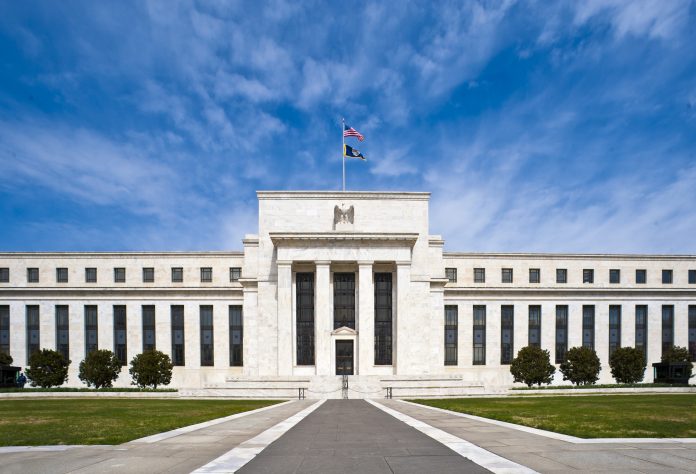The U.S. Federal Reserve, often called “the Fed,” is the most powerful financial institution in the United States—and one of the most influential central banks in the world.
Even if you’ve never interacted with it directly, almost every financial decision you make is affected by the Fed, from mortgage rates to credit cards, savings accounts, job markets, and inflation.
This article explains what the Federal Reserve is, what it does, and why its decisions matter to you personally—in simple, practical terms.
1. What Is the U.S. Federal Reserve?
The Federal Reserve System is the central bank of the United States, created in 1913 to provide the country with a stable, safe, and flexible financial system.
Unlike private banks, the Fed does not aim to make profits. Its purpose is to manage the nation’s money supply, stabilize the economy, and maintain trust in the U.S. dollar.
Key fact:
The Federal Reserve works independently of the government, meaning politicians cannot directly control its decisions.
2. Why Was the Federal Reserve Created?
Before 1913, the U.S. experienced frequent banking crises, panics, and recessions. Banks failed suddenly, people lost savings, and credit markets collapsed.
The Federal Reserve was created to:
-
Prevent bank runs
-
Control inflation
-
Lend money during crises
-
Stabilize economic cycles
In short: to protect the economy from chaos.
3. What Does the Federal Reserve Do? (Core Functions)
✅ 1. Controls Inflation
Inflation reduces buying power. Too much inflation makes life expensive; too little slows growth.
The Fed aims for stable inflation, usually around 2% per year.
✅ 2. Manages Interest Rates
The Fed sets the federal funds rate, which influences:
-
Mortgage rates
-
Car loans
-
Credit cards
-
Business loans
This makes borrowing cheaper or more expensive.
✅ 3. Protects Employment
The Fed tries to maintain maximum employment, ensuring businesses keep hiring without triggering runaway inflation.
✅ 4. Maintains Financial Stability
During crises (like 2008 or COVID-19), the Fed injects money into the system to prevent collapse.
✅ 5. Supervises Banks
The Fed monitors major banks to reduce the risk of failure.
4. The Fed’s Two Main Goals (Dual Mandate)
The Federal Reserve operates under a dual mandate:
-
Maximum employment
-
Stable prices (low inflation)
Balancing these two goals is difficult—and explains why Fed decisions often spark debate.
5. How the Federal Reserve Affects Your Daily Life
Mortgage & Housing Costs
-
Lower interest rates → cheaper home loans
-
Higher rates → expensive mortgages, lower home demand
Auto & Personal Loans
-
Fed rate hikes make car loans and personal loans cost more
-
Rate cuts make borrowing easier
Credit Card Debt
Most credit cards have variable interest rates
→ Fed hikes = higher monthly payments
Savings Accounts
Higher interest rates mean:
-
Better savings returns
-
Higher yields on fixed deposits and bonds
Lower rates reduce saving incentives.
6. How the Fed Uses Interest Rates to Control the Economy
When the Economy Is Overheating:
-
Fed raises rates
-
Borrowing slows
-
Spending decreases
-
Inflation cools
When the Economy Is Weak:
-
Fed cuts rates
-
Borrowing increases
-
Spending rises
-
Businesses hire more workers
This process is known as monetary policy.
7. What Is the Federal Open Market Committee (FOMC)?
The FOMC is the Fed’s policymaking body.
It:
-
Meets 8 times a year
-
Decides interest rates
-
Signals future economic outlook
Markets around the world react instantly to FOMC announcements.
8. Why Stock Markets React to the Federal Reserve
Rate cuts:
✅ Stocks often rise
✅ Companies can borrow cheaply
✅ Profits increase
Rate hikes:
❌ Stocks may fall
❌ Higher borrowing costs
❌ Slower business expansion
This is why Fed speeches can move Wall Street within minutes.
9. The Fed During Crisis Situations
The Federal Reserve becomes especially powerful during crises:
-
2008 Financial Crisis → prevented banking collapse
-
COVID-19 Pandemic → emergency lending & stimulus support
-
Inflation Surges → aggressive rate hikes
Without the Fed, economic crashes would be deeper and longer.
10. Is the Federal Reserve Government-Owned?
No.
The Fed has:
-
Government oversight
-
Private bank participation
-
Independent decision-making
This independence helps protect it from political pressure—but also leads to controversy.
11. Why the U.S. Federal Reserve Matters Globally
Because the U.S. dollar is the world’s reserve currency, Fed decisions affect:
-
Global interest rates
-
Emerging markets
-
Commodity prices (oil, gold)
-
Currency exchange rates
When the Fed moves, the world listens.
12. Common Criticisms of the Federal Reserve
Some critics argue that:
-
The Fed raises rates too fast
-
Low rates create asset bubbles
-
Policies favor big banks
-
Decisions can hurt low-income households
Despite criticism, most economists agree the Fed is essential.
Conclusion: Why the Federal Reserve Matters to You
The U.S. Federal Reserve may seem distant, but it directly shapes:
-
Your loan payments
-
Your savings growth
-
Job opportunities
-
Inflation levels
-
Stock & housing markets
Whether you are a borrower, saver, worker, investor, or business owner—the Federal Reserve impacts your financial future every day.
Understanding the Fed helps you make smarter financial decisions and better anticipate economic changes.



